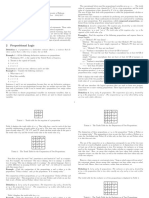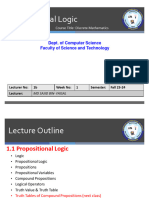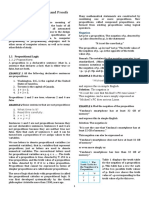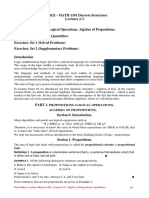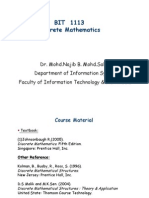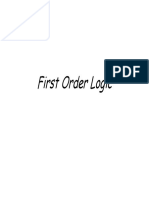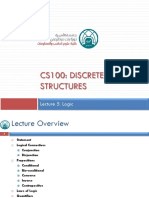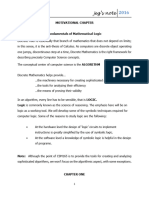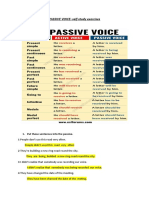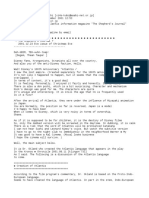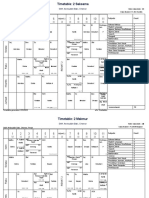0% found this document useful (0 votes)
14 views35 pagesCOSC 50A Lecture 1 1
The document outlines the fundamentals of Discrete Mathematics, focusing on logic and proofs, and aims to equip students with the ability to classify logical statements as true or false. It introduces key concepts such as propositional logic, logical connectives, and various operators including negation, conjunction, and disjunction, along with their truth tables. Additionally, it explains conditional statements and their significance in mathematical reasoning.
Uploaded by
th3g3ntl3man2023Copyright
© © All Rights Reserved
We take content rights seriously. If you suspect this is your content, claim it here.
Available Formats
Download as PDF, TXT or read online on Scribd
0% found this document useful (0 votes)
14 views35 pagesCOSC 50A Lecture 1 1
The document outlines the fundamentals of Discrete Mathematics, focusing on logic and proofs, and aims to equip students with the ability to classify logical statements as true or false. It introduces key concepts such as propositional logic, logical connectives, and various operators including negation, conjunction, and disjunction, along with their truth tables. Additionally, it explains conditional statements and their significance in mathematical reasoning.
Uploaded by
th3g3ntl3man2023Copyright
© © All Rights Reserved
We take content rights seriously. If you suspect this is your content, claim it here.
Available Formats
Download as PDF, TXT or read online on Scribd
/ 35








